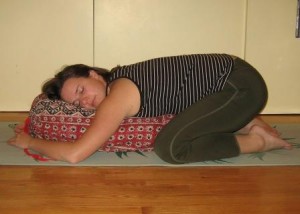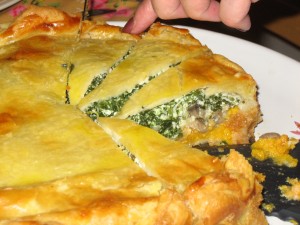Welcome to our newest guest blogger, Lin-Ann. She’s a longtime student of mine with a beautiful dedicated practice. When she mentioned she’d be interested in writing about her experiences practicing and even teaching a bit of yoga, I jumped at the chance to hear her voice. I’m so glad I did – read for yourself!
—
On Thanksgiving Day, I decided to take a month-long leave from my job to dedicate myself to self-healing. Admitting I needed this break was a big deal for a Type-A achiever like me, and being supported by my employer and my loved ones in taking the break is even more of a blessing. In my professional life, I give my energies to working in a residential treatment center as an adolescent and family therapist for teen girls with emotional and behavioral issues, most of whom have histories of significant trauma or mental illness. In my personal life, I am coping with the devastating loss of a significant love relationship. This has really gotten me thinking about the power of healing grief, trauma and other psychological ailments through yoga and other bodywork. (More on my professional endeavors in the next post.)
As a gift to myself, and as a way to dedicate the next month to self-healing, I decided to turn the newly-vacated spare room in my house into a yoga/bodywork room. I brought in my music, candles, my mat and props. So now, commitment to practice doesn’t even require taking my mat out of the closet. It’s all laid out.
For a week, I’ve been knocked down with a sinus infection and plagued by the lethargy that accompanies grief. I thought that since I had not practiced in three days, I should go to the mat and see what it brings me. This was met with a lot of negative “brain chatter” as I call it: I’m too tired, too sick to practice. My body doesn’t feel like it. This is not going to feel good at all. I had bodywork done the night before which focused on my left glute, and a lot of accompanying anger emerged from that area of my body during the massage. My inner teacher was telling me to focus on stretching out this area, which had been worked pretty deeply the night before. I still felt some strange energy emanating from that point. I did a short series of sun salutations and then did half pigeon, revolved half moon, triangle, revolved triangle, baddha konasana (bound angle or butterfly), and then took a seated position with knee over knee (not sure what this asana is called). I also did ankle over knee, pulled into my chest, lying on my back. I ended with self massage using Barrett’s donated tennis balls on my left hamstring (to release anger) and left shoulder (a place where I happen to carry a lot of sadness).
During this short practice, I was amazed to feel a physical strength and peace that is too easy to forget that we possess in moments of vulnerability and weakness. As I moved and stretched slowly, another old friend that had not visited me for a while came to knock on my door: hope. Hope that there is a way out of grief, and I am taught this solely through the way my body feels, not what my mind tells me. My body says, See you can feel strong again. Look what your being is capable of. And then the mind follows. The evidence is in my body, so there is no way for my mind to talk me out of it. This, I think it’s the true power of healing through the body, rather than the mind. And this, from a person who spends most of her day healing others through talk therapy.
What elation to be able to find small moments of peace and present-mindedness, groundedness, and kindness amongst the chaos of this life. I wonder if any of you have experienced these moments, whether your body has been able to help free you from the trappings of the mind. Have any of you had your practice help you find your way out of trauma, grief, or loss? I would love to hear about your experiences.
It’s almost midnight, but I think I need to head to the mat now. Namaste, Lin-Ann


